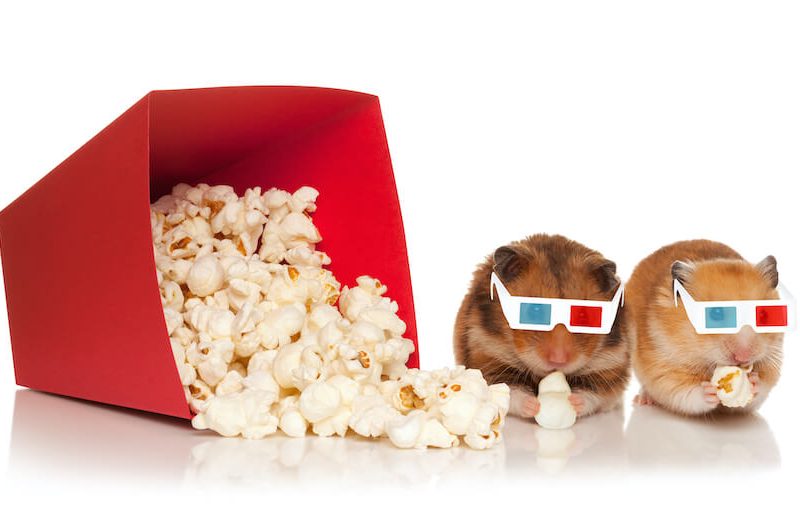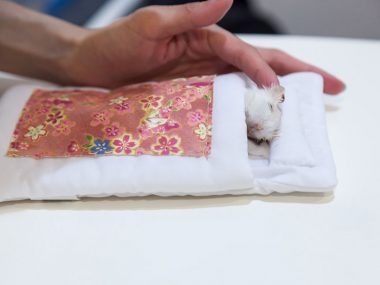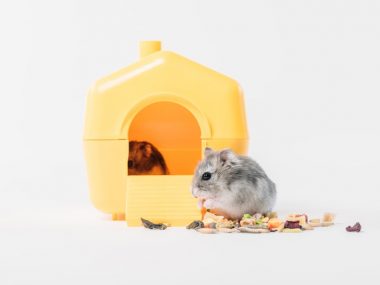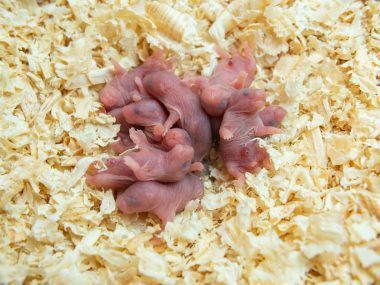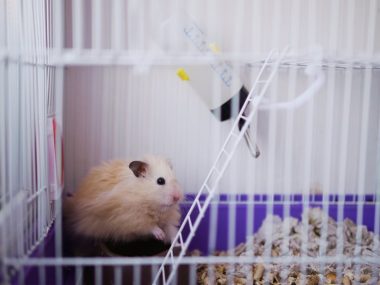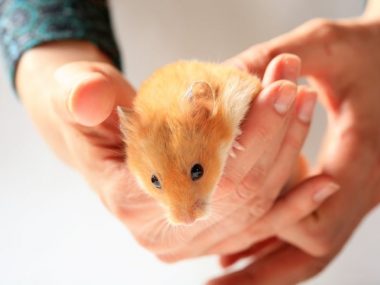So you’ve got a new hamster and not sure what you can and can’t feed it. Read this before you attempt to give any hamster treats or anything outside of commercial hamster food. This information could literally save your hamster’s life!
Table of Contents
What Do Hamsters Eat Naturally?
Hamsters in captivity should still be fed a diet that mimics what they would typically eat in the wild. So, let’s look at what those things are and see if we can recreate that within a domestic environment.
The natural habitat of hamsters is in desert regions of the Middle East. You can probably imagine pickings are slim in such hostile terrain. These little creatures leave their deep underground burrows come nightfall to forage for food. They are required to travel miles across rocky, sandy dunes and through dense shrubbery.
Hamsters tend to seek out things like roots, grains, berries, plants and are known to partake of insects and small creatures that may include lizards, other rodents, snakes, and more. A hamster’s cheeks are designed to accommodate a lot of food which is stuffed into the cheek and then carried back to their burrow. This is why you’ll notice your pet hamster stuffing things into its cheeks. It’s an instinctual behavior.
Feeding A Pet Hamster
The exact re-creation of a hamster’s diet from the wild for a pet hamster is extremely challenging. However, if you carefully choose what you feed to your hamster, it can come pretty close to the ideal natural diet.
Because good feeding is key to hamster longevity. With a proper diet, a hamster remains healthy but may also exceed its expected lifespan. In fact, the Guinness World Records has on record that a hamster exceeded the 1-2 year lifespan reaching 4.5 years!
Good and Bad Foods For Hamsters
Now we get into the “meat and potatoes” (no pun intended) of what you should and shouldn’t feed to your hamster. If we don’t have a specific food item listed, we highly recommend doing a bit of research before giving it to your hamster.
Commercial Hamster Food
There’s an overwhelming amount of online information out there disputing dangerous ingredients to avoid in commercial hamster food. Beware that many make claims online about hamster food ingredients without supporting data/sources.
Hamsters should be fed pellet food. When given a seed and pellet combination, hamsters tend to eat the seed and leave the pellets behind. It’s the pellets that contain nutritious vitamins, minerals, proteins, and other necessary daily needs.
If hamsters go on a seed-only diet, it is very unhealthy. Sugary foods should never be fed to a hamster. Instead, opt for treats that are fresh veggies.
MedVet recommends a pellet diet as well in their hamster care information guide. The guide mentions that hamsters who are fed a mix containing seeds can easily become obese and suffer from malnutrition. Treats (fed in moderation) can include fruit, veggies, pasta, cheese, and lean meat (thoroughly cooked.)
Veterinary Partner recommends a pellet diet with 15-20% protein. Hamsters may appear to be eating a lot of food when, in reality, they are storing food in a corner somewhere in the cage. A hamster consumes on average 12 grams of food a day (about the size of your thumb knuckle to the tip.)
A published research article by Laboratory Animal Medicine states hamsters are “susceptible to diabetes.” Additionally, a hamster can develop diabetes by being fed a diet high in fat. The diet of a Chinese Dwarf hamster should especially be carefully monitored because they easily develop “spontaneous hereditary” diabetes.
Water
Your hamster should always have access to clean fresh water. Filtered water is best. Never give your hamster vitamin water, sparkling water, flavored water, or distilled water. Remember to thoroughly wash the hamster’s water bottle or container with each water change or fill up.
Dairy Products
It’s odd to think of a hamster consuming dairy. However, there are nutritional and enriching bonuses in one dairy product.
Can Hamsters Drink Milk?
We were not able to find any evidence-backed data mentioning milk as being dangerous for hamsters to drink. However, the fat content and sugars in milk should be carefully considered, especially because of hamsters’ vulnerability to developing diabetes. The diet of a wild hamster doesn’t include milk (other than their mother’s milk when nursing). It is best also to avoid any plant-based milks too. Overall, to stay on the safer side, don’t give your hamster any milk.
Can Hamsters Eat Cheese?
Cheese is safe and nutritious to give as a treat to your hamster within moderation. The cheese should be plain, low-fat, and be an occasional treat. Cheese is not something a wild hamster eats. But, it’s not something that we want to feed to them routinely.
Can Hamsters Eat Yogurt or Cottage Cheese?
Because yogurt and cottage cheese contain a high milk content, your hamster’s digestive system may not appreciate either of these. Hamsters were not designed to digest lactose nor consume dairy products (except for a bit of cheese).
Fruits and Vegetables
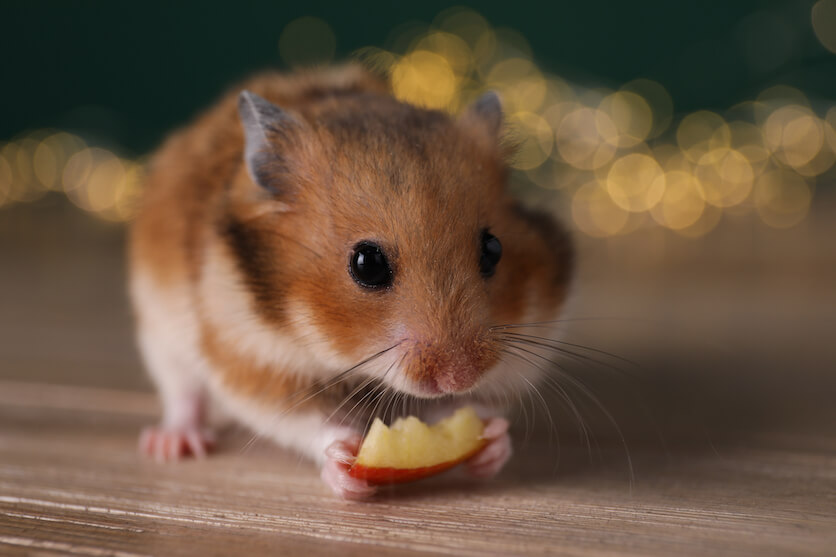
There are some very healthy options when it comes to fruits and vegetables to give to your hamster as a treat. All fruits and vegetables should be thoroughly washed before feeding to your hamster. Residual pesticide or bacteria may be on the surface that can harm your hamster if ingested.
Can Hamsters Eat Grapes?
Yes. It has been ingrained in many pet owner’s minds not to give dogs grapes. However, your hamster can enjoy a rare treat with about half of a grape, minus the grape seeds. Grapes are high in sugar, so keep this in mind because of the diabetes risk in hamsters. If you have a Chinese hamster, passing on the grapes is a better option, as these are rare to their diet.
Can Hamsters Eat Apples?
Just like grapes, hamsters can enjoy about ¼ of a slice of apple that is peeled and free from any seeds. The seeds of apples contain cyanide which can be deadly if consumed by your hamster. For Chinese hamsters (who have a higher risk of diabetes,) a few bits of apple should be a rare treat.
Can Hamsters Eat Oranges?
Citrus of any kind is a big no-no for hamsters, and this includes oranges. The citric acid in lemons, grapefruits, limes, oranges, tangerines, clementines, and mandarins causes gastric upset in hamsters. So never feed your hamster an orange!
Other Safe Fruits To Feed In Moderation
- Banana
- Melons
- Berries
- Mango
Vegetables
The greens are another major part of the hammies diet. Most vegetables are safe for hamsters to consume and should be incorporated into their diet.
Can Hamsters Eat Carrots?
Yes, carrots are safe to feed your hamster but only in small amounts (about 1 thin slice). Because carrots are high in sugar, this too should be a rare treat.
Can Hamsters Eat Green Leafy Vegetables?
Iceberg lettuce is not recommended to give to your hamster because of its lack of nutrients. If you do choose to give your hamster leafy greens, the best ones to choose from include kale, spinach, and romaine lettuce. As with any other treat, moderation is key.
Other Safe Veggies To Give Your Hamster
- Asparagus
- Broccoli
- Bok Choy
- Cauliflower
- Celery
- Cucumber
- Timothy Hay
- Pumpkin
- Squash
Protein
Proteins are an important source of energy, plus they help built muscle strengths both among humans and animals. Proteins help support the growth of your hamster. According to the “Nutrient Requirements of Laboratory Animals: Fourth Revised Edition” book, a diet with 15-18% of crude proteins, obtained from soybeans, corn, and casein, supports the growth of small hamsters.
Can Hamsters Eat Peanut Butter?
Yes, but only in tiny amounts. Peanut butter is high in carbs and sugar and a very tiny amount (about the size of half of a dime.) It should be spread out onto a surface in a thin layer, so it doesn’t get gunked up in your hamster’s mouth. This is also a treat to offer only a rare occasion because of diabetic risks.
What Human Snacks Can Hamsters Eat?
Foods that are processed and prepackaged are chocked full of preservatives that should never be fed to your hamster. The only snacks that humans enjoy that a hamster should be fed (in tiny bits) would include fresh fruits/vegetables and popped popcorn (salt/butter/oil-free) with the kernel removed.
Toxic/Bad Foods To Avoid Feeding to Hamsters
- Alcohol
- Caffeine (chocolate, tea, coffee, etc.)
- Soft drinks
- Fatty foods
- Raw potatoes/sweet potatoes/yams
- Sparkling or mineral water
- Fried foods
- Chocolate
- Nuts
- Salt
- Sugar replacement; Equal, Splenda, xylitol, saccharine
- Tomatoes: plant leaves/stalk
- Sugary foods
- Processed foods
- Citrus (oranges, lemons, limes, grapefruit, etc.)
- Nightshade vegetables (potatoes, tomatoes)
- Pits of Fruits (peach, plum, apricot)
- Onions
- Garlic
- Uncooked beans/lentils
Is Organic or Natural Food Better For Hamsters?
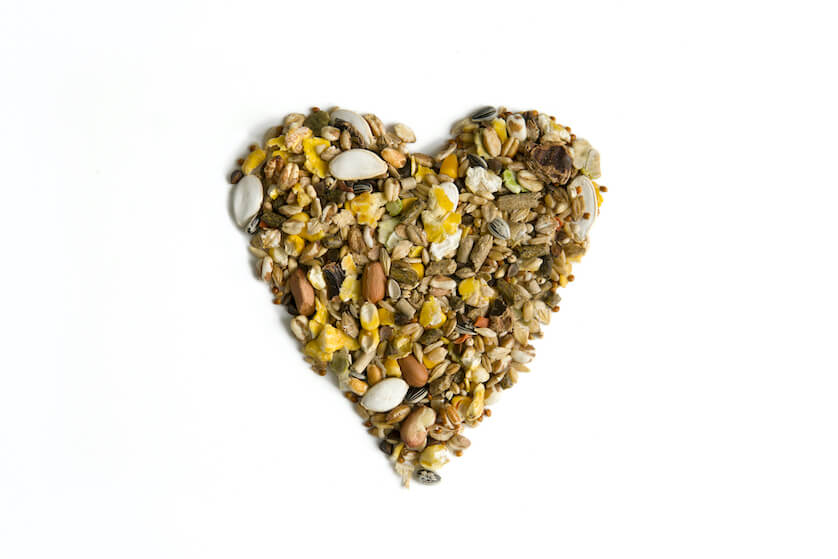
According to the Mayo Clinic, organic is a term used for a specific method and materials used in the production of foods. “Natural” refers to a food that is free from artificial coloring, flavoring, and preservatives. While the two terms are used interchangeably when looking at any consumable product for humans or animals, they are not the same.
Here’s the “lo-down” on organic vs. non-organic.
- Organic foods are moderately higher in nutrients.
- Organic grains have lower toxic metals from soils.
- Organic produce has lower pesticide residue.
Pellet-Forward-Thinking
It can be safe to assume that hamster pellet food is your best bet. Treat your hammie here and there with the right foods, and you’ll end up with a healthy, long-living, diabetes-free pet. If in doubt, do your homework before feeding.
